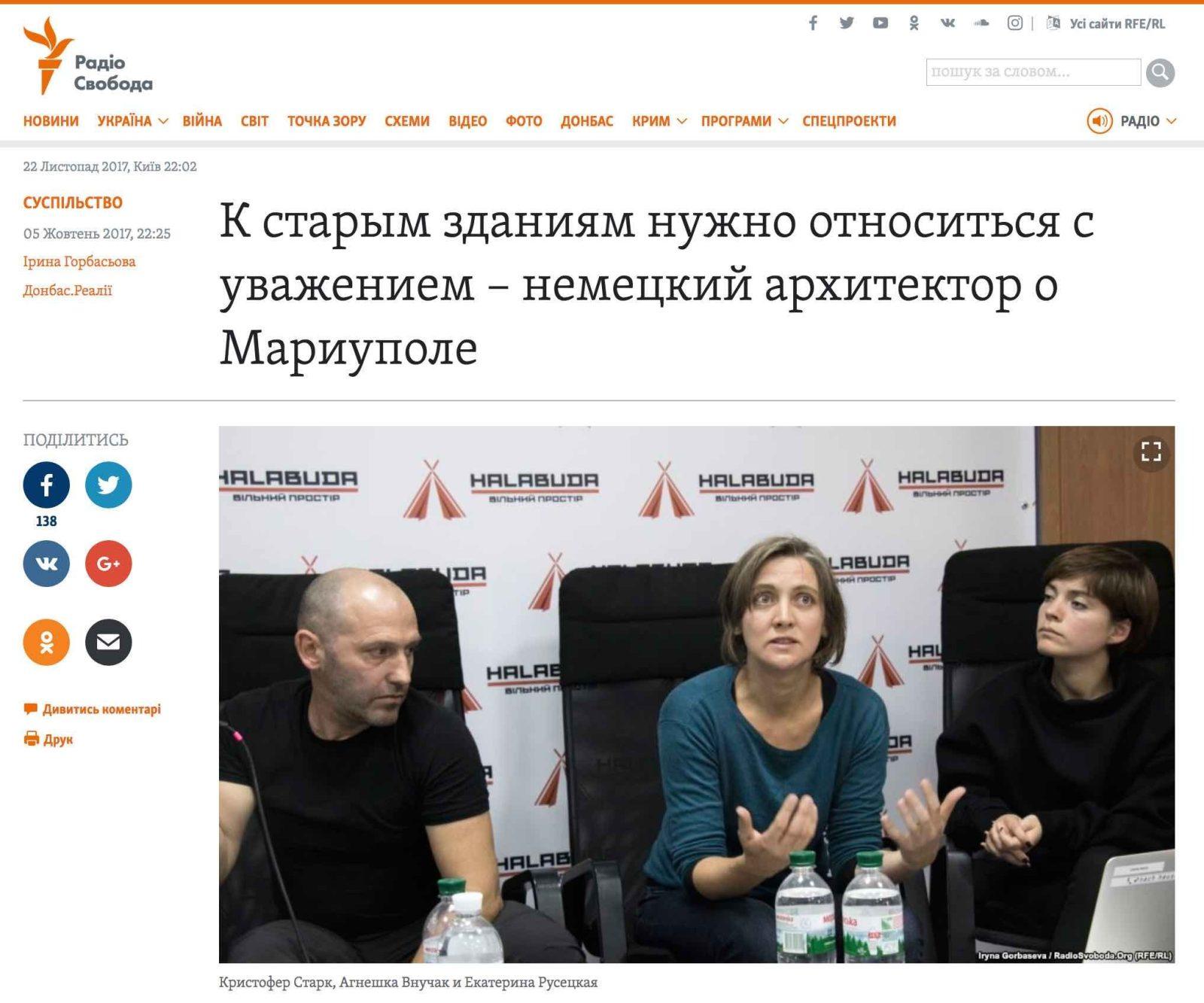AUSTAUSCH UKRAINE [2017]
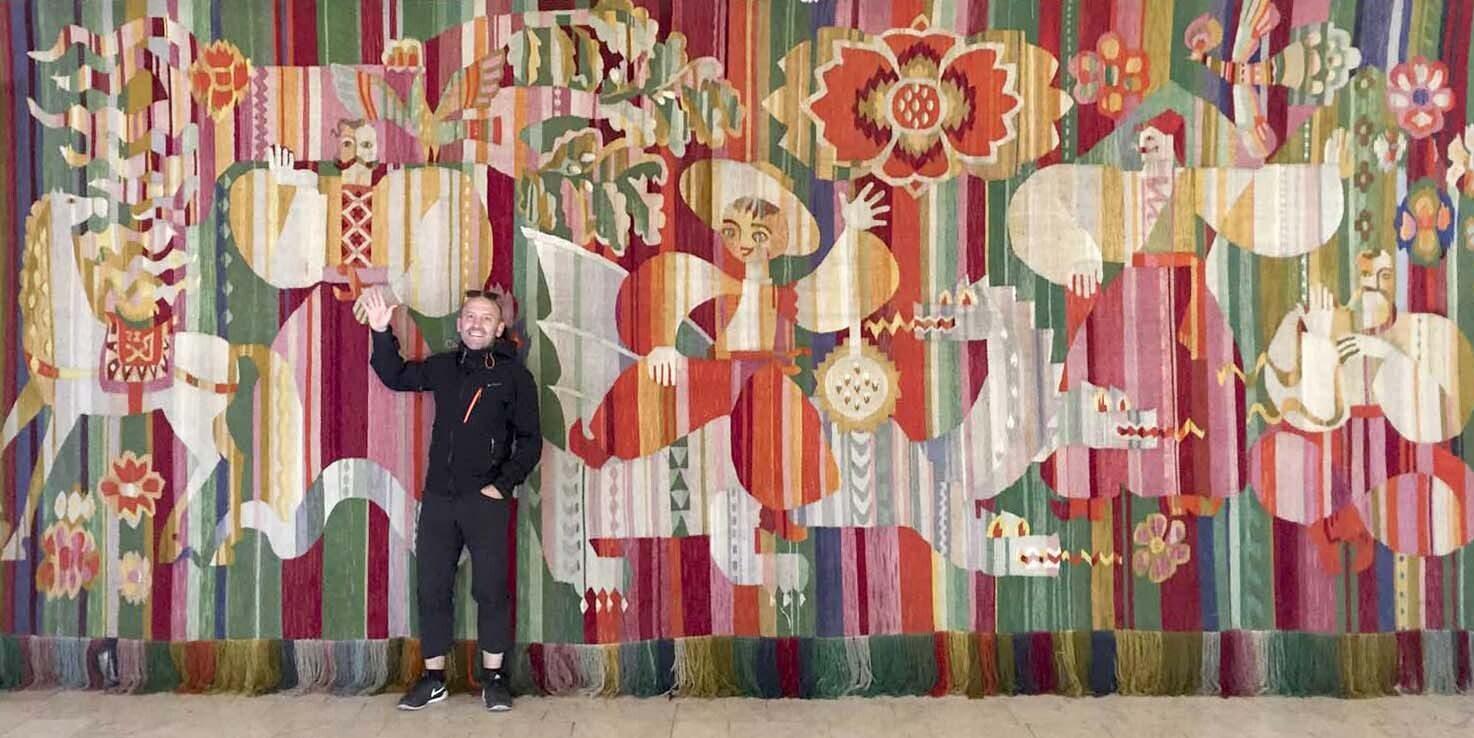
Nachdem wir im Dezember 2016 eine großartige Gruppe aus verschiedenen Osteuropäischen Staaten – Ukraine, Russland, Armenien Moldowa – bei uns zum Forum Regionum zu Gast hatten, waren diesmal wir in die Ukraine eingeladen.
Auf Einladung von „Kultura Medialna“ aus Dnipro und dem Austauschprogramm "“Kyiv Dialogue / Kiewer Gespräche" waren wir also eingeladen an einem Residenzprogramm – activation of local communities: cultural instruments – in Dnipro und Mariupol teilzunehmen und Vorträge und Workshops zu halten. Darüber hatten wir auch die Möglichkeit verschiedene Städte zu besuchen und festzustellen, wie in der Ukraine die Kunst- und Kulturszene die Städte lebenswerter macht. Nicht nur in Kiew, sondern auch in kleineren Städten tun sich KünstlerInnen und Kulturinteressierte zusammen um die Zukunft ihrer Städte mit zu gestalten.
Since we have hosted this great bunch of people from several east-european countries - like Ukraine, Russia, Armenia, Moldowa - as guests during Forum Regionum in december 2016 it was now us being invited to Ukraine.
So we were delighted to follow the invitation of „Kultura Medialna“ from Dnipro and the exchange program „Kyiv Dialogue“ to be part of the residence program - activation of local communities: cultural instruments - in Dnipro and Mariupol to hold presentations and lead workshops. Through our stay we also had the opportunity to visit different cities in this area and noticed how intensively the influence of culture and art makes life in these cities worth living. It is not only happening in Kiew that artists and cultural activists get together to take actively part in creating future plans for their cities.

[www.britannica.com/place/Ukraine]
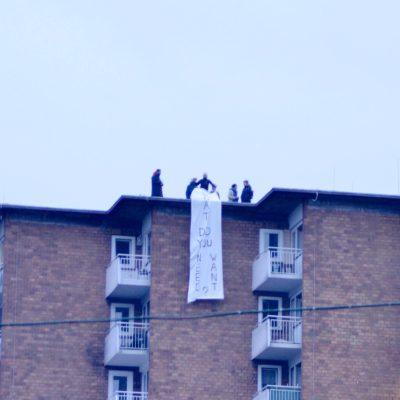
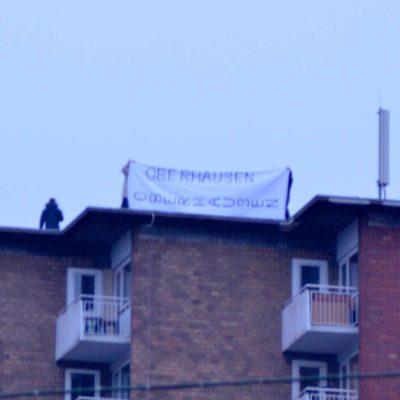
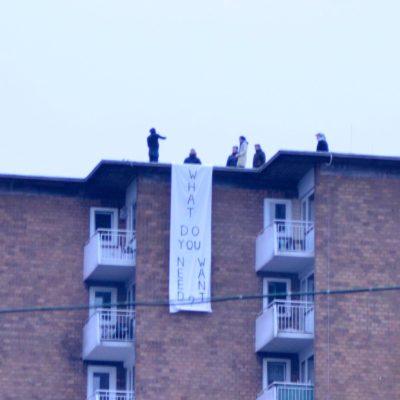
Kiew
Einer der Teilnehmer des 'Forum Regionum' in Oberhausen war Mitya Churikov. Mit ihm und mit Kate Rusetska erfolgte die künstlerische Inbesitznahme des Hochhauses im Zentrum von Oberhausen im Dezember 2016 als ein kleiner Testlauf. Hier nahm die Idee ihren Lauf...
Nun also, in Kiew folgte der zweite Streich – die „Besetzung“ des Kulturministeriums der Ukraine. Vom Hochhaus zum Ministierium! Schön, dass wir das im nun gewachsenem Team gemeinsam in die Tat umsetzen konnten! Die Sprüche über Dominanz und Unterwerfung, der BDSM Szene entlehnt, reflektieren die Arbeitsbeziehung zwischen der Künstlerszene und einer staatlichen Institution, wie dem Ministerium für Kultur. Erniedrigung, Zensur, Abhängigkeiten und selbst-auferlegte Zwänge spiegeln das gegebene Machtgefälle zwischen den Kunstinstitutionen und den Künstlerinnen.
Das Mystetskyi Arsenal zeigte mit der Ausstellung „Das Heute, welches nie passierte“ 67 Positionen junger ukrainischer Künstlerinnen und Künstler, darunter ein 3 x 5 m großes Abbild der Kunstaktion im und auf dem Kulturministerium. Die Ausstellung lief bis zum 31.10.2017.
Kiew
One of our guests of Forum Regionum was Mitya Churikov. Back then together with his partner Kate Rusetska he occupied the Oberhaus in the center of Oberhausen within an artistic performance as a test run. This is where it all once started and the idea came to life…
Now in Kiew should follow the second run - the occupation of the ministry of culture in Ukraine. From the Oberhaus to the ministry! Such great pleasure how this became finally a common action by our expanded team! Banners with written messages of dominance and repression inspired by the scene of BDSM reflect upon the working relationship between artists and state institutions like the ministry of culture. Humiliation, censorship, dependency and self-imposed bondages symbolize the current power gap between art institutions and artists.
The Mystetskyi Arsenal where spot for an exhibition called „Today, which never came“ in which 67 statements by young Ukrainian artists were shown including a 3x5 m image of the performance inside and on top of the ministry of culture. This exhibition took place until the 31h of october 2017.
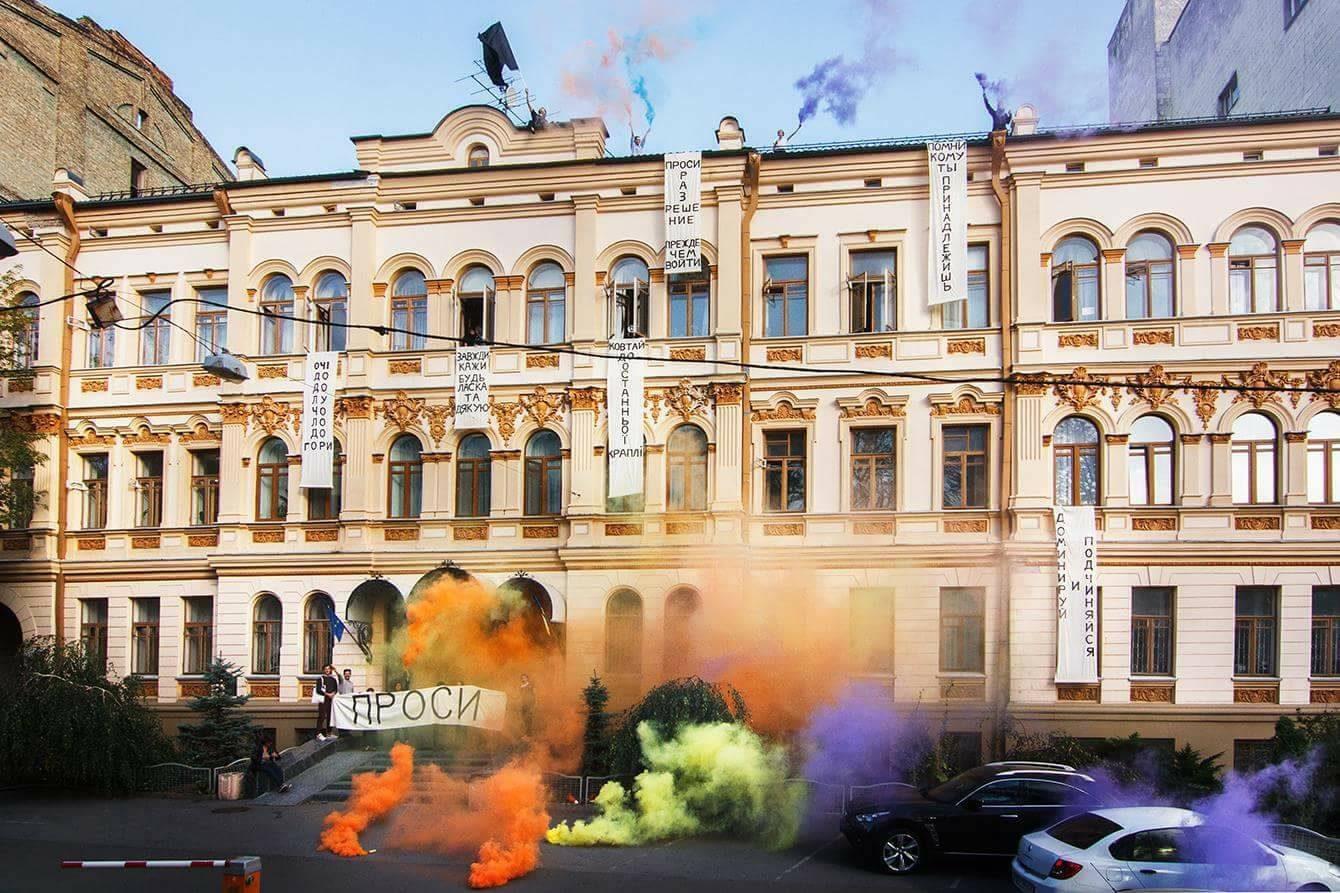
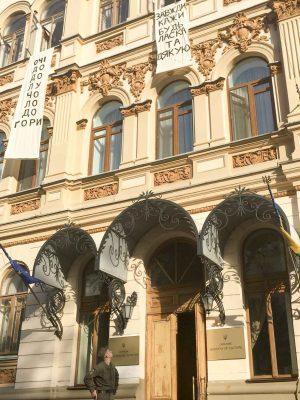
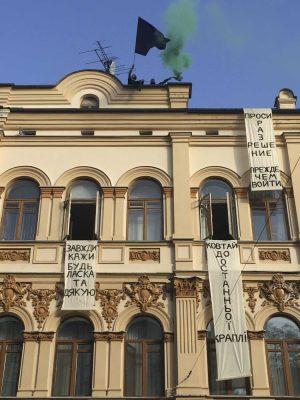
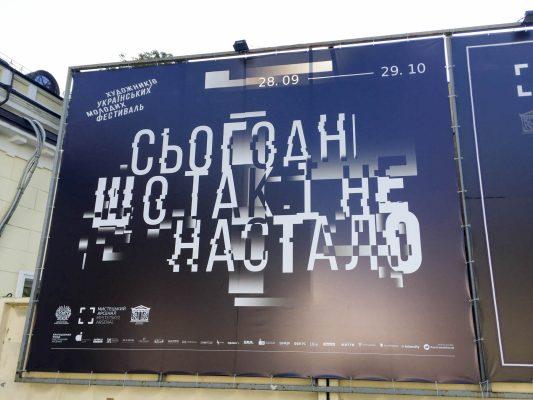
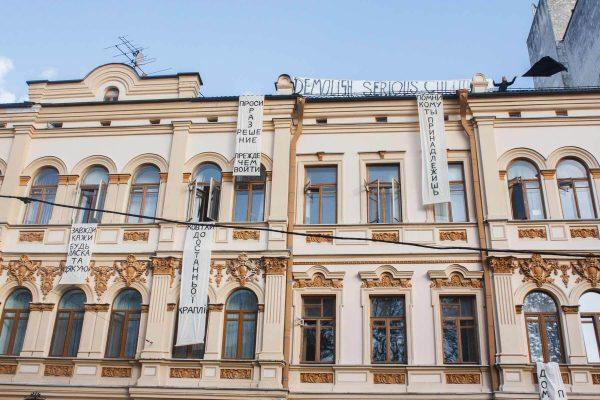
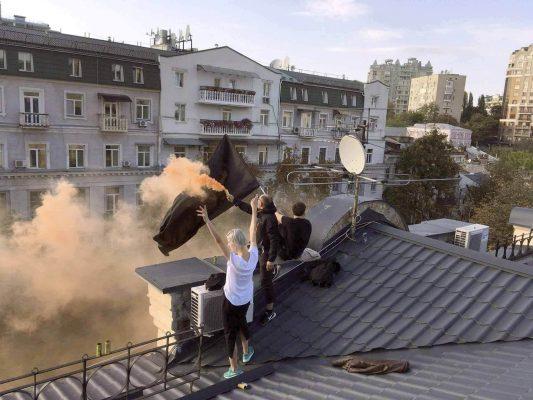
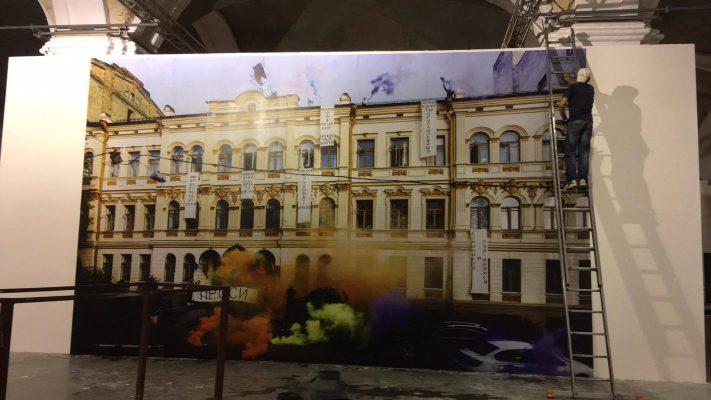
Dnipro
Nach der erfolgreichen künstlerischen Besetzung des Kulturministeriums in Kiew sind wir der Einladung von „Kultura Medialna“ nach Dnipro gefolgt. Dort durften wir im Rahmen einer mehrtätigen Konferenz von Aktivisten und Place-Makern aus verschiedenen Städten der Ost-Ukraine von unserer Arbeit erzählen und wie unter Beteiligung von vielen Menschen alte Gebäude umgebaut (Wasserturm), Neues erbaut (Refugees’ Kitchen) oder Stadt repariert (Turmuhren, Das E von Ob_rhausen) wurde. - vom Umbau des Wasserturms mit viel Muskelhypothek über Refugees’ Kitchen bis zum Oberhaus.
Viele Kuratoren, Aktivistinnen, Kulturmanager, Künstlerinnen und Vertreter von Kulturinitiativen der Ost-Ukraine kamen nach Dnipro zu einer mehrtägigen Residenz. Das Projekt „laboratory of art studios" zielte darauf ab, einen Erfahrungsaustausch zu gewährleisten, ein professionelles Netzwerk zu schaffen und eine Kooperation zwischen aktiven Initiativen im Bereich Kultur und Urbanismus in Dnipropetrowsk, Donezk, Lugansk und Saporischschja zu etablieren.
Eine Woche lang ging es in den Workshops um Projektmanagement, aktive Gemeinschaftsentwicklung durch kulturelle Initiativen, internationale Zusammenarbeit mit Künstlern und internationalen Kultureinrichtungen sowie Methoden zur Revitalisierung öffentlicher Räume in Städten.
Die Teilnehmer arbeiteten zudem an der Entwicklung und der anschließenden praktischen Umsetzung gemeinsamer Projekte mit lokalen Initiativen. Diese Mini-Projekte der Teilnehmer zielen auf den kulturellen Austausch zwischen Dnipro und den jeweiligen Städten ab. 2-3 gemeinsame Projekte werden mit Ressourcen unterstützt und innerhalb eines Monats nach Abschluss des Arbeitsaustausches in der Stadt Dnipro oder in den Herkunftsstädten der Teilnehmer*innen realisiert.
„Kultura Medialna“ selbst hat mit der Durchführung von Urbanen Interventionen in Dnipro Erfahrung gesammelt. Mit Crowdfunding und viel ehrenamtlichen Engagement entstand diesen Sommer eine öffentliche Bühne in einem vernachlässigtem Bereich eines Parks. Dieser neu entstandene Ort und das Programm entwickelte sich zum Publikumsmagneten und veränderte die Wahrnehmung des Ortes nachhaltig.
Ein neues Objekt der Begierde gibt es: Ein altes, leerstehendes Kanuvereinsgebäude, oder besser gesagt ein Sportpalast, am Ufer des Dnjepr, harrt darauf, aus dem Dornröschenschlaf erweckt zu werden. Bei diesem Vorhaben werden wir unsere Kolleginnen und Kollegen unterstützen.
Dnipro
After the occupation of the ministry of culture in Kiew we continued our journey towards Dnipro to accept the invitation of „Kultura Medialna“. In the context of a conference made by activists and place maker from several cities in east-Ukraine we were more than honored to tell about our work in Oberhausen and how it can be possible through the participation of many engaged people to renovate an old building (Water tower in Oberhausen), build something new (Refugees` Kitchen) or fix part of the city (Clocks in the Water tower, the letter E of a neon writing). A full report about the renovation of the water tower combined with enormous muscle power leading to the Refugees` Kitchen and the Oberhaus.
Many curators, activists, cultural manager, artists and deputies of cultural initiatives in East Ukraine came to Dnipro to join a several days lasting residence. The project „laboratory of art studios“ sets its focus on guarantee an exchange as well as creating a professional network in order to establish a cooperation between active initiatives in the field of culture and urbanism in Dnipropetrowsk, Donezk, Lugansk and Saporischschja.
It was a whole week packed with workshops dealing with subjects like project management, active community building trough cultural initiatives, international cooperation with artists and cultural institutions as well as methods to revitalize public space in cities.
In addition all participants worked simultaneously on joint projects together with the local community which they have developed and practically presented in the end. These kind of mini-projects were suppose to show the cultural exchange between Dnipro and other particular cities. 2-3 projects were therefore supported by offering resources in order to finalize them within one month after finishing the work exchange in either Dnipro or one city of origin of the participants.
„Kultura Medialna“ got already much experience in the realization of urban interventions in Dnipro. Through the methods of crowd funding and a lot of voluntary support they have managed this years summer to create a public stage in a neglected part of a park. This new developed space with its various program attracted quite many people and suddenly changed the perception of the space.
But there is already a new object of desire: An old abandoned building latest used by a canoe club which can easily be more seen as a palace. Just next to the river Dnjepr it waits like sleeping beauty to get awaked. In this project we will of course support our colleagues.

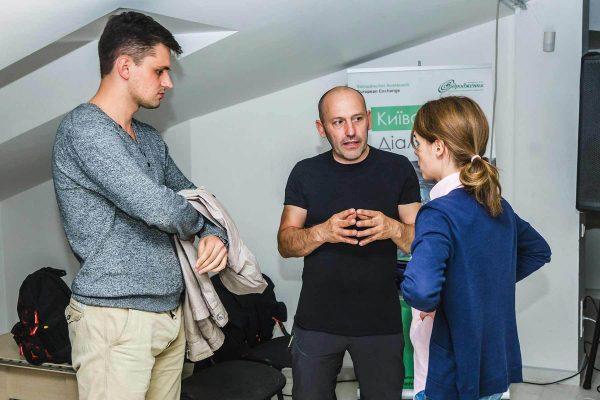
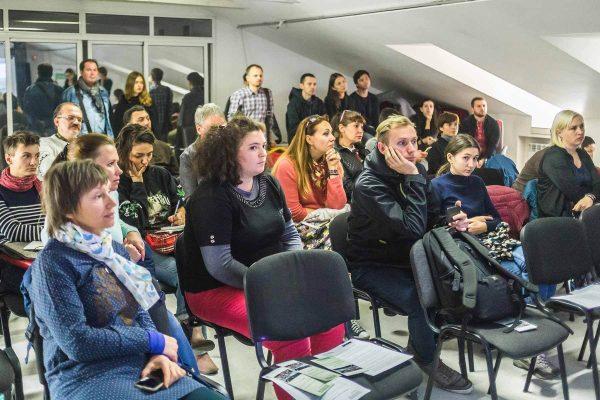
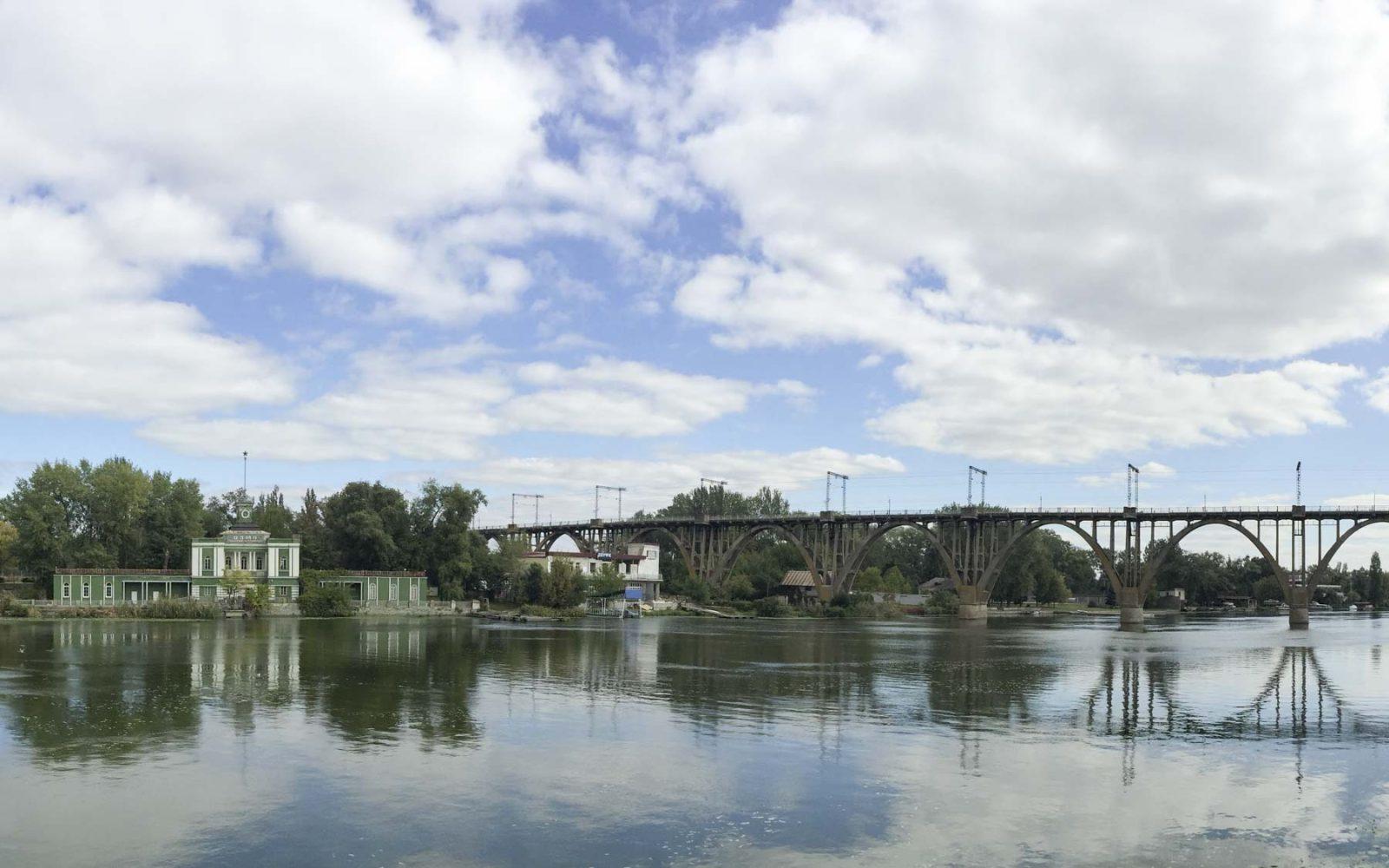
Saporischschja
Auf der Reise von Dnipro nach Mariupol liegt Saporischschja, die Partnerstadt von Oberhausen. Eine Gelegenheit also für eine kurze Stippvisite der Stadt mit der längsten innerstädtischen Straße Europas, ganze 12km. Bekannt war uns, dass Saporischschja eine Industriestadt ist. Zu sehen bekamen wir ein enormes baukulturelles Erbe an Gebäuden der klassischen Moderne und des sozialistischen Klassizismus gepaart mit der ungeregelten Bauwut der Stadtbewohner, die jeden Balkon zum zusätzlichen Wohnraum ausbauen und maximal vergrößern. Ein kleines Museum des Konstruktivismus dokumentiert und bewahrt Bilder und Zeugnisse der Bauten, an denen oft genung der Zahn der Zeit und die Hand des Menschen zu Gange war. Die veranstalteten Stadtspaziergänge sind allenfalls ein erster Schritt zur Bewußtmachung der vorhandenen Baukultur.
Saporischschja
On the route from Dnipro to Mariupol we passed Saporischschja which is since 1986 the twin city of Oberhausen. A great opportunity to stop by and have a walk around town with its longest inner-city street in Europe, 12 km. What we knew was that Saporischschja was same as Oberhausen an industrial city. It appeared to us an enormous cultural heritage of buildings from the classic modern times to socialistic classicism paired with an unstructured way of building by the citizens. Followed by the wish to maximal expand their flats many of the citizens rebuild their balconies to additional living space. A little museum of the constructivism shows documents and keeps original images of buildings which are marked by the ravages of time and the hands of people. First walks through the city could only give a glimpse of the current building culture.
Mariupol
Eine Industriestadt am Asowschen Meer, mit riesigen Metallurgiekombinaten. Auch hier geht ein Strukturwandel von statten, der vergleichbar ist mit dem des Ruhrgebiets. In Mariupol, unweit der Frontlinie zum besetzten Donbass, haben viele Inlandsgeflüchtete eine neue Heimat gefunden. Nach der Belagerung und kurzfristigen Besetzung der Stadt im Jahr 2015 ist nun Ruhe eingekehrt. Viele Menschen haben die gepackten, bereitgestellten Koffer wieder in Schränke verstaut, denn sie haben wieder Hoffnung und Mut gefasst – trotz aller vorhandenen Probleme.
Gebäude wurden wieder aufgebaut, Orte und Treffpunkte von jungen Initiativen gestaltet. Die Gebäude am Hauptplatz sollen innerhalb des nächsten Jahres erneuert werden. Die Stadtverwaltung kämpft jedoch mit den selbstgebauten Balkonen. Fun fact: Noch gibt es keine rechtliche Handhabe um die Bewohner zum Rückbau zu bewegen, oder vorher schon den Ausbau zu verhindern. Es grüßt die Gesetzeslücke und so werden vermutlich vorerst die Ausbauten an den Fassaden bleiben.
Und wie es sich für eine Industriestadt gehört, gibt es viele spannende leerstehende Gebäude. Ein solches spektakuläres ist die alte Marine-Schule direkt am Strand, das von einem jungen Ukrainer, der ansonsten kein Obdach hätte, offiziell bewacht wird.
Aber es gibt Orte wie das unabhängige Kulturzentrum Платформа ТЮ ("Platforma Tju“), eine bedeutende Anlaufstelle in der Ostukraine, die neuen Strömungen aus Kunst, Film, Musik und Theater eine Plattform bietet. Das Zentrum organisiert Diskussionsrunden, Lesungen und Vorträge, Seminare, Konzerte und Theater, aber auch Kundgebungen und politische Demonstrationen.
Unser Vortrag fand jedoch an einem anderen Ort statt, in Halabuda, das eine Art Nachbarschaftstreffpunkt mit einem breiten, selbstorganisierten Angebot an Kursen und Fortbildungen bietet. Zusammen mit „Kultura Medialna“ hatten wir eine Präsentation und anschließende Diskussion über das „Selbermachen“ und Reparieren von Stadt und über selbstinitiierte Projekte. In der anschließenden Diskussion ging es auch viel um das herrschende Misstrauen zwischen Zivilgesellschaft und Stadtverwaltung, um einen befürchteten Kontrollverlust seitens Politik und Verwaltung.
Mariupol
An industrial city at the Azov sea which is the residence of huge state combines of the steel and iron works. The spirit of structural change lies in the air and reminds of things back in the Ruhr area. Mariupol which is close to the frontline of occupied Donbass became now the new home of inland refugees. After a short occupation in 2015 things calmed down in the city. The people`s ready prepared suitcases became slowly unpacked again since they took again courage and hope despite all current issues. Houses have been rebuild, spaces and meeting spots have been created by young initiatives. All the buildings around the central station will be modernized within the next years as it has been said. But the municipality still struggles with the self-made balconies. Fun fact: Still there is no hold or handle to request a removal from the citizens or to stop the process in the first place. Welcome to the world of loopholes which makes it possible to let these excrescences at the fronts survive. And how typical for an industrial city there are still many exciting abandoned buildings to discover. One of the spectacular ones is the old school of marines directly at the beach that is officially guarded by a young Ukrainian who is otherwise homeless.
But there are also places like the independent cultural center Платформа ТЮ ("Platforma Tju“), an important place in the East-Ukraine for all streams of art, film, music.
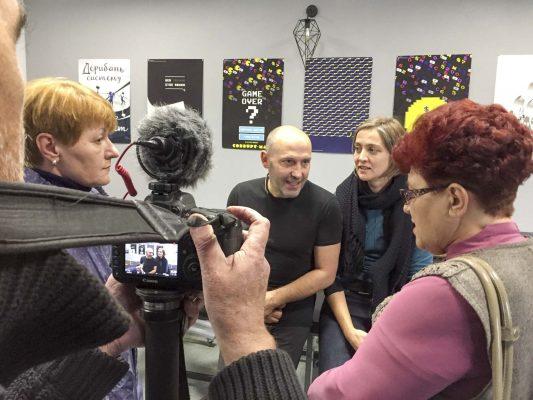
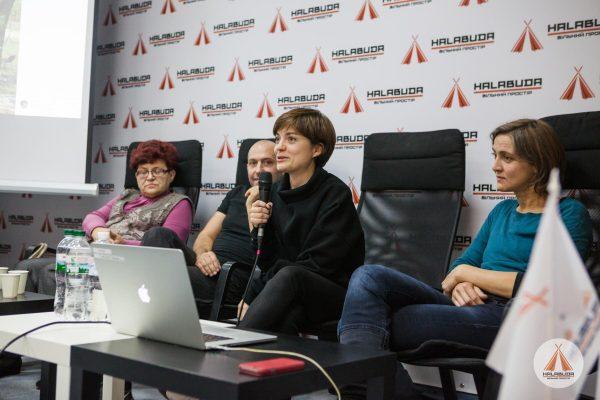
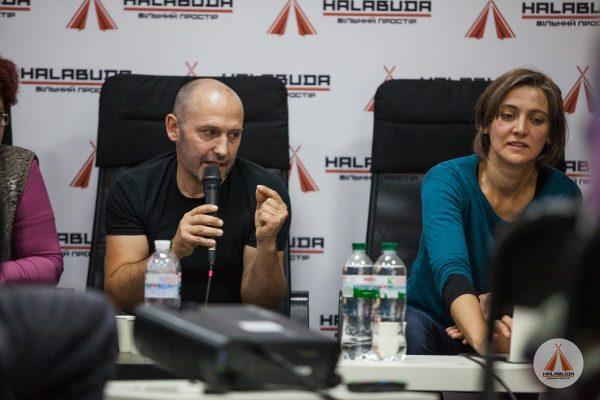
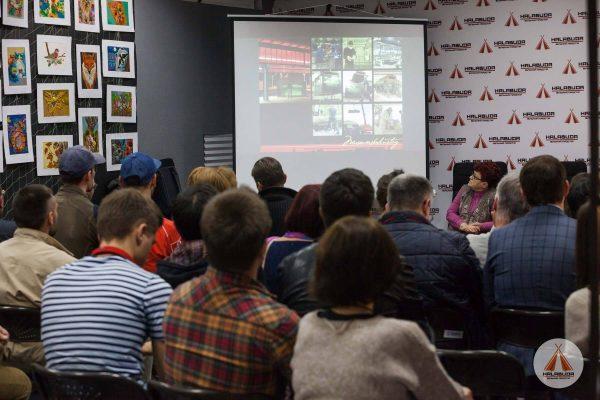
[Bilder: G.Balabanova]
Das Portal des Radio Swoboda stellte einen Bericht online:
